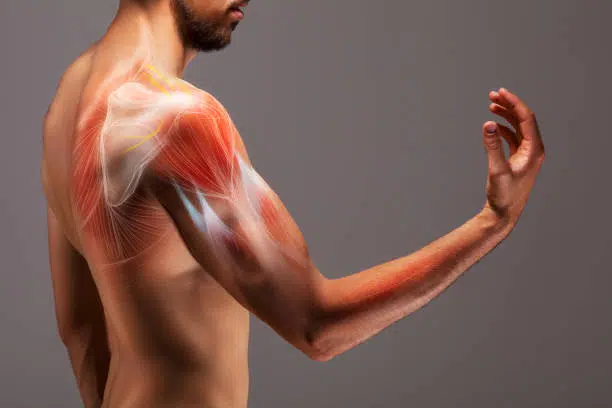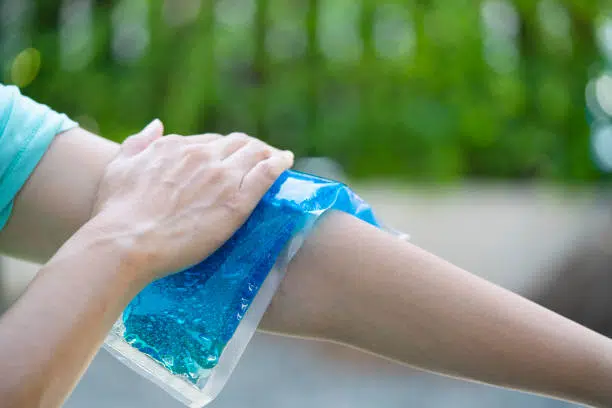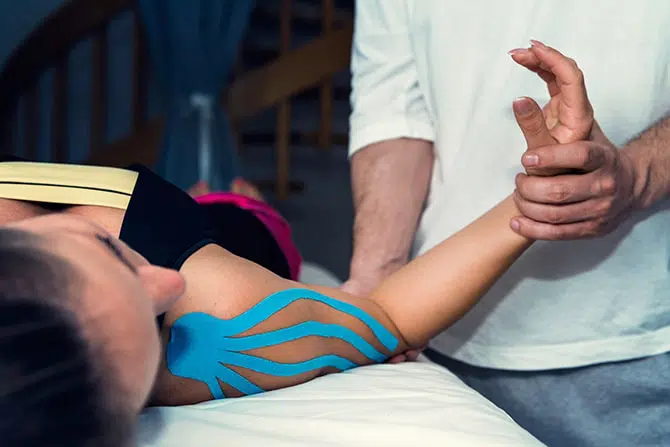
The muscle healing process can be a little more complicated than it seems. There are three phases to consider when looking at the rebuilding of our muscle tissues: destruction, repair, and remodeling in order from most damaged all the way up to fully functional again.

When you get muscles injured, they go through a process of healing and renovation. Injury can happen in many ways; 90% of muscular sports injuries occur via two mechanisms: contusions and strains. A Contusion happens when you directly force your muscles while strains happen because of excessive forces on muscles leading them toward failure of muscle fiber. Both injuries can make muscle fibers and blood vessels tear, which results in filling up the injured area with blood.
Following an injury, the body's inflammatory cells will infiltrate a newly damaged area and help to destroy any dead or dying muscle tissue. Amazingly this process only occurs at one specific site on your body- where you've recently been injured. Your muscles use their own sealing mechanism called “fascial attenuation,” which helps them repair themselves. If you are asking “Do muscles hurt when healing?” Yes, you will feel pain and soreness as your muscles heal. You can also feel pain when your muscle is healing after a workout or surgery, which usually last up to 48 hours.
During this phase, the doctor will immobilize your injured area with braces, splints, or even simple taping techniques. This can help reduce the pain and inflammation in you during treatment so that it doesn't get worse after being treated for only 3-7 days. You should also follow RICE (Rest, Ice, Compression, Elevation) instructions to minimize any damage done by accidentally damaging yourself while healing.
The body is an amazing machine that can heal itself by creating new muscle fibers. This process begins with an injury to the site, which triggers inflammation and generates cells called macrophages; these eat away at dead tissue while also cleaning up any dried blood outside their bodies as well. Once this cleanup phase has occurred they release another type of cell: a satellite stem cell responsible for generating myoblast-these specialized particles go on to integrate into damaged areas until repaired completely.

Injury to muscle can be more serious than it seems, because unlike bones, which have a regenerative capability for new growth at any time during their repair process; muscles don't repair through this same means.
One type, known as fibroblasts produces connective tissue at injury sites and helps repair muscles after they've been damaged by exercise or other means. In addition to producing this protective material for your tissues, there are also new blood vessels generated during this phase.
The process of transitioning from immobilization to early mobilization is important because it can encourage faster regrowth and increase tensile strength. Physical therapists should be involved during this phase as they help select exercises that are appropriate for you based on your condition, goals, etc. You can also do gentle exercises called isometrics in which your muscles are contracted but no movement can take place at a joint. Progression to isotonic workouts, where all parts of it get stronger through their full range of motion, occurs next. Combined with proper stretching, this standardizes rehabilitation for patients during different stages after an injury.

The remodeling phase is a crucial time in which the regenerating muscle fibers and connective tissue continue to mature. During this stage, they are oriented into final scar tissue with important implications for how it will heal orientationally afterward.
When the tissue repairs itself, it can be random in orientation. Treatment during this phase assists with regenerating new muscle fibers and connective tissues into parallel lines instead of one big clump like a ball of yarn.
After a traumatic injury, manual therapy along with specialized treatment techniques can help facilitate the orientation of this new scar tissue as well as prevent restrictions in your healing process. This will decrease any chance of you reinjuring yourself while also gaining back full strength through isokinetic exercises and sports-specific training, which should occur during these time periods since they're so important.